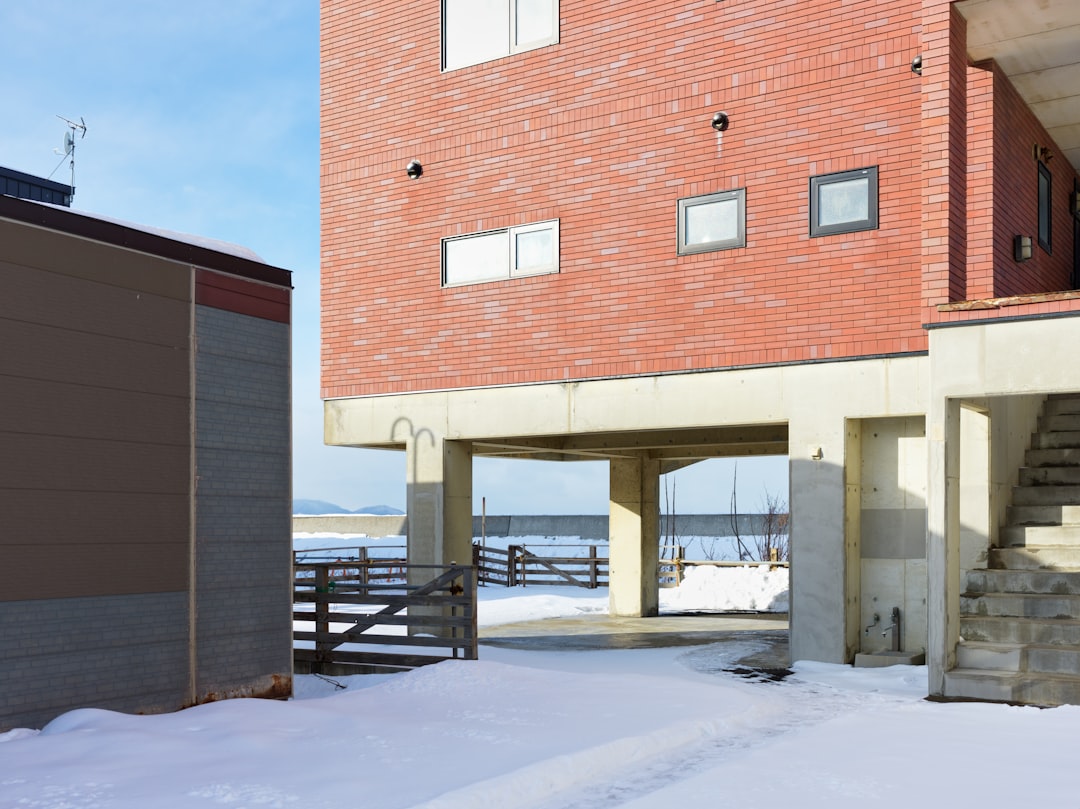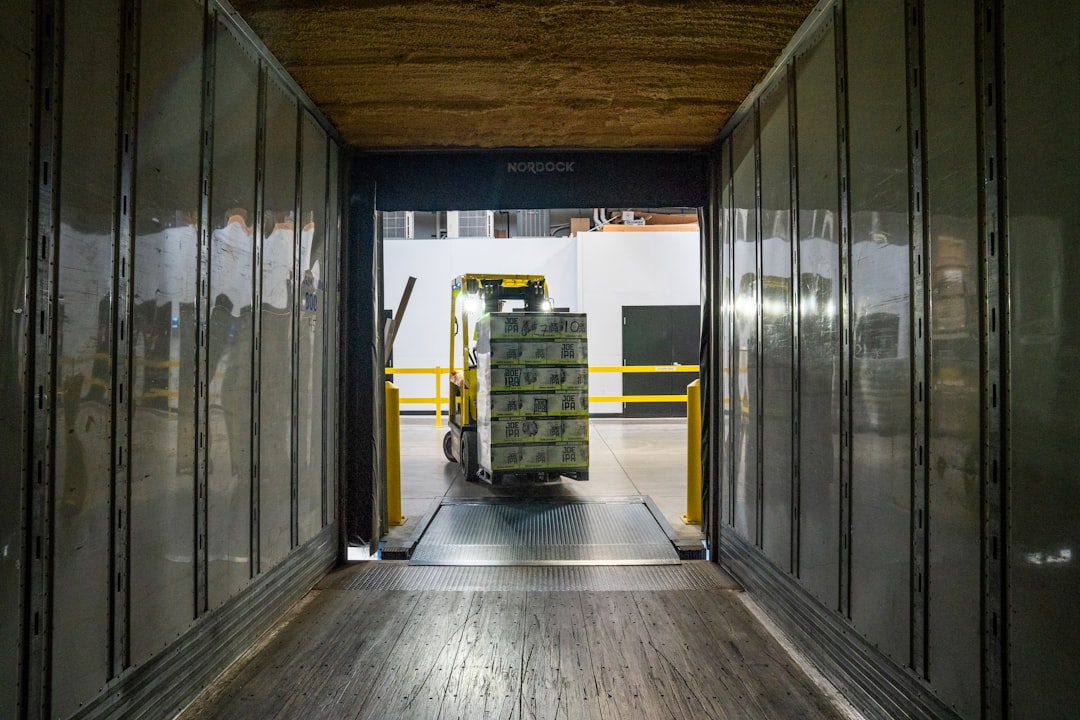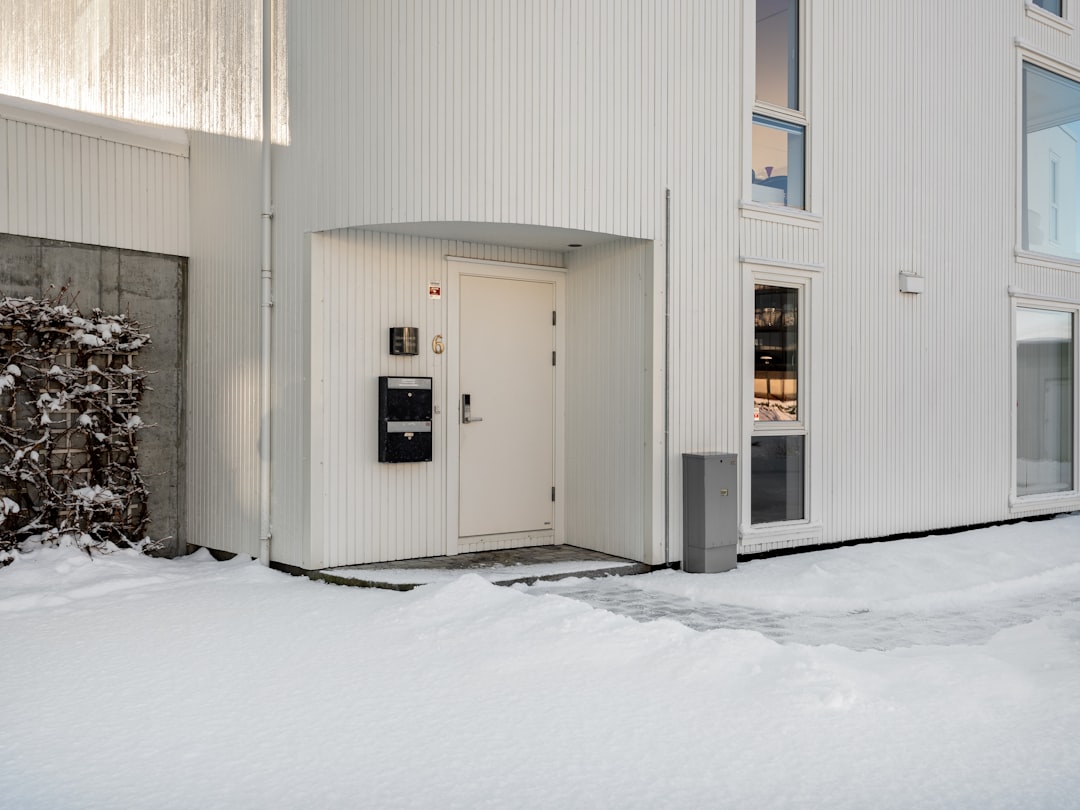

Engage prospects with a scan and streamline customer engagement with FREE QR code marketing tools by Sona – no strings attached!
Create a Free QR CodeFree consultation

No commitment

Engage prospects with a scan and streamline customer engagement with FREE QR code marketing tools by Sona – no strings attached!
Create a Free QR CodeFree consultation

No commitment
Frozen food storage facilities play a critical role in preserving food quality, ensuring safety, and maintaining compliance with rigorous industry regulations. With strict guidelines, growing sustainability expectations, and rising operational costs, facilities face increasing pressure to optimize energy efficiency and regulatory adherence while delivering on customer promises in the frozen food supply chain.
Despite widespread digitization in logistics, many frozen food storage operations still rely on manual record keeping, printed checklists, and paper-based tracking, leading to inefficiencies, increased risk of non-compliance, and a lack of visibility into potential regulatory gaps. When essential compliance logs or asset records are missing or outdated, facilities may overlook high-value process improvements or fail to document critical incidents, resulting in costly audit exposures and potential product recalls under tightening FSMA mandates.
Modern QR code solutions bridge the gap between physical and digital workflows. By enabling instant access to vital records, real-time product traceability, and automated compliance logging without the friction of dedicated apps or cumbersome hardware, industry leaders reduce paper waste, surface up-to-date activity signals, and make regulatory responsiveness routine. Explore the Sona QR product overview. Adopting QR codes empowers frozen food storage professionals to streamline traceability, support sustainability initiatives, and enhance both customer and auditor experiences while safeguarding against the risks that traditional manual processes often introduce.

For many frozen food storage teams, the core challenge is achieving timely, accurate insight into facility compliance in the face of inefficient, disconnected tracking. Missed compliance signals, such as incomplete logs or unreported maintenance, often stem from paper-based or siloed systems. The result is increased risk of regulatory breaches, diminished customer trust, and preventable waste that compounds over time.
QR codes create a direct pathway from physical inventory and assets to digital compliance workflows. With a single scan, staff can access a current SOP, submit a temperature check, log a corrective action, or open a maintenance ticket. The interaction gets time-stamped and attributed to a user or role, which improves accountability and turns everyday actions into audit-ready data. Tools like Sona QR make this transformation practical by providing dynamic QR codes, scannability analytics, and integrations with CRMs or compliance systems. For evidence-based approaches to tying offline interactions to outcomes, see Sona’s blog on offline attribution.
Some companies are reducing human error further by automating user identification and linking scan data directly to CRM or workforce systems. For example, a staff badge scan at the beginning of a shift can associate subsequent QR interactions with the correct user. When combined with Sona QR’s analytics, these patterns turn passive records into actionable insights, such as flagging zones with low scan activity or identifying teams that need additional training.

Paper and static documents slow teams down, especially in cold environments where gloves and condensation complicate handling materials. Moving to QR workflows removes many of the friction points that lead to missing records, illegible handwriting, and outdated revisions. Digital-by-default documentation also improves accessibility for auditors and remote managers, who can review logs in real time without waiting for binders or email attachments. Cold storage operators are increasingly adopting QR-driven workflows, as seen in industry reports.
Replacing analog processes does not require a full system overhaul. Start by targeting a few high-impact workflows, then scale as adoption grows. In most facilities, the biggest gains come from digitizing compliance check-ins, safety protocols, and maintenance record keeping. These are frequent, repetitive tasks where small efficiencies add up to measurable improvements in accuracy and response time.

In frozen food storage, a persistent frustration is the lack of real-time insight into compliance gaps and operational risks when activities go untracked. Refrigeration failures, door seal issues, and improper pallet stacking can escalate into compliance deviations quickly. Without fast, verifiable documentation of checks and interventions, small issues can become audit findings or product losses.
QR codes convert passive assets into active data points and actionable triggers. Every sign, rack, or piece of equipment can link directly to the most current SOPs or inspection forms. With dynamic QR codes, content can be updated instantly across the facility when regulations change or when internal standards are refined. This ensures consistent guidance while reducing the chance that a technician references an outdated document. Facility signage can also be augmented with digital signage to drive engagement at the point of work.
By integrating QR code touchpoints, facilities bridge the visibility gap, turning unknowns into actionable data. Managers gain the ability to monitor scan frequency by zone, correlate activity with incident rates, and focus attention where it will have the greatest impact on safety and performance.

Selecting the right QR format is essential. Many facilities struggle not because of a lack of codes but because they use the wrong destination or format for the job. In a cold, high-traffic environment, the code must open the fastest possible path to completion, and the destination must adapt when procedures or paperwork change.
QR code versatility covers every critical workflow touchpoint in frozen storage. Dynamic codes are particularly valuable, since documentation and contacts change frequently. With a platform like Sona QR, you can manage formats and destinations from one dashboard and update them without reprinting labels.
Dynamic QR codes are especially critical in regulated environments. They ensure documentation evolves with regulations and centralized oversight, and they allow facilities to iterate on forms based on analytics from scan behavior.
Compliance and performance improvements often hide in plain sight. Leaders may not know where process breakdowns occur, which zones are under-documented, or which assets are starved for maintenance attention. QR codes placed at decision points unlock data that quantifies these blind spots and turns them into improvement projects.
Focus first on the highest-value surfaces and moments: the places where staff are already pausing to do a task or make a judgment. A code at a rack endcap can transform a routine check into a verifiable log. A code on a freezer door can confirm pre-shift adherence to hygiene protocols. Over time, scan data reveals patterns that guide staffing, training, and preventative maintenance.
Facilities that use QR data in these zones shift from anecdotal management to evidence-based decisions. Routine scans become a foundation for performance monitoring, allowing teams to set benchmarks, compare shifts or locations, and identify new value creation opportunities.

A common challenge is linking staff actions and compliance checks to individual accounts without adding friction. Anonymous paper forms and scattered spreadsheets create redundant effort and gaps that are hard to diagnose. QR codes resolve this by tying scans to specific assets, locations, and people.
Start with a handful of high-impact use cases and define success metrics for each. For example, aim to reduce time to log a temperature check from five minutes to one minute, or target a 30 percent increase in completion rates for pre-shift safety checks. With Sona QR, you can visualize these improvements through dashboards and share them with auditors or customers.
Each QR code scan is a signal of intent and context. In frozen food storage, that intent might be completing a checklist, requesting service, or reviewing a safety protocol. By deploying multiple codes across touchpoints and tagging them by purpose, facilities can segment activity automatically and use those insights to target follow-up training, maintenance, and communications.
Facilities can also differentiate between internal and external audiences. For example, scans by third-party auditors and logistics partners can trigger tailored experiences, such as access to shared reporting dashboards or certification pages. Meanwhile, staff scans can segment by department, role, or shift, which supports targeted coaching and recognition programs. For campaign ideas, see Sona’s retargeting playbook.
With Sona QR, each code becomes a smart entry point into your operational funnel. You can retarget based on real behavior rather than assumptions, which drives measurable gains in compliance adherence, training completion, and issue resolution speed.
Compliance communications often sprawl across binders, posters, emails, and vendor manuals. Without a unifying system, teams can miss updates and execute outdated instructions. QR codes unify these touchpoints by routing every physical surface to a dynamic digital destination that stays current.
Operations leaders can deploy QR codes across the same channels they use for external communications. This includes carrier packets, pallets, outbound paperwork, and B2B collateral. When customers and partners scan a code on a packing slip or pallet label, they can access certifications, temperature logs, and chain-of-custody documentation in seconds. Internally, the same approach harmonizes training, SOP updates, and maintenance workflows. Explore playbooks for the CPG industry.
By mapping compliance journeys with scan data, facilities ensure consistent, timely communication across teams and counterparts. Sona QR centralizes management of these codes and destinations so that updates are instantaneous and analytics are available to leadership.
Inconsistent QR deployments lead to fragmented data and missed automation opportunities. A structured approach ensures that every code has a clear purpose, an optimized placement, and a measurable outcome that ties back to compliance and operational efficiency. Start with one area, instrument it end to end, and expand once you have baseline data that shows what works.
Before you launch, establish a simple governance model: who creates codes, who owns destination content, how you name and tag codes, and how often you review performance. A few well-chosen conventions make scaling across zones, shifts, and locations much easier.
Pick one or two high-impact goals that align to compliance or productivity. Examples include pre-shift hygiene checks at entry points, freezer temperature logging at defined intervals, or maintenance escalations for high-risk assets like ammonia systems.
Choose static for unchanging destinations like a downloadable PDF or a facility map. Choose dynamic for anything that should be trackable or editable, such as SOPs, forms, or links that will evolve with regulations or processes. Learn more about dynamic QR codes.
Strong visual cues are essential, especially where lighting, frost, and glove use affect scannability. Make the code obvious, include a visible frame, and place an explicit call to action that says what will happen when the code is scanned.
Start with placements that align with daily habits. If operators already pause at a rack or door to complete a task, add the QR code there to cut steps and speed up logging. Ensure that staff understand how and why the codes are being used.
Analytics turn scans into measurable improvements. Use your QR platform’s dashboard to identify which placements, shifts, and zones generate consistent engagement, and where gaps persist.
Many organizations struggle to see which compliance workflows are at risk until a failure occurs. Comprehensive QR code tracking changes that equation. By logging every scan along with metadata, leaders gain an early warning system for lapses and a defensible audit trail for regulators and customers.
Analytics should not end at the scan. The real value comes from connecting scans to outcomes like completed forms, maintenance actions, or training acknowledgments. When scan data flows into your CRM or compliance tools, you can alert supervisors in real time, document corrective actions, and attribute operational gains to specific QR initiatives. For broader measurement strategy, review Sona’s guide to multi-touch attribution.
With Sona QR and Sona.com, facilities can unify fragmented touchpoints across buying and operating stages. You can see which placements drive engagement, respond in real time, and connect QR interactions to outcomes like fewer violations, faster audits, or higher customer satisfaction with traceability.
Sustained impact requires ongoing integration, regular training, and a feedback loop that keeps improving your deployment. Treat QR codes as infrastructure, not a one-time project. The more you align codes with daily workflows and decision points, the more naturally they become part of the culture.
Prioritize simplicity. The best QR deployments ask for minimal taps and show only what is needed for the task at hand. When teams see that scanning shortens their work and reduces rework, adoption grows quickly. Reinforce this with recognition and by looping outcomes back to the workforce.
You can generate and track your first QR codes for free with Sona QR. Start creating QR codes for free.
Real examples help teams imagine what is possible and build momentum. Start with simple, high-frequency tasks that provide immediate wins. Then, as staff confidence grows, layer in more advanced links such as energy dashboards or cross-system automations.
Creative placement makes a difference. Codes placed at natural pauses reduce friction, and context-specific calls to action set clear expectations. Use durable labels, high-contrast frames, and short, benefit-driven CTAs to maximize daily engagement.
These examples illustrate the shift from paper-reliant operations to data-driven environments. Once a facility sees how quickly audits can be completed with QR-linked documentation, the motivation to expand use cases grows rapidly.
Success with QR codes comes from disciplined execution and a willingness to iterate. Start with a top-priority workflow, measure the change, and communicate results widely. As teams see the benefits, they will identify new opportunities to digitize and improve.
Avoid pitfalls like deploying codes without clear CTAs, placing them in low-visibility areas, or sending scans to long, generic webpages. In cold environments, materials and placement are critical. Codes must be resilient to moisture and cleaning products, and they should be positioned so that workers can scan without breaking PPE protocols or handling items unsafely.
QR codes are transforming frozen food storage facilities into environments where compliance is observable, verifiable, and simple to execute. By equipping every critical touchpoint with QR-enabled workflows, you gain visibility into behaviors that were previously hidden, speed up audits, and reduce paperwork. As regulations and customer expectations evolve, QR code-powered processes provide the agility to update procedures instantly, maintain traceability, and prove performance.
Pairing these deployments with a platform like Sona QR and Sona delivers end-to-end visibility: from scan to form completion, from maintenance ticket to resolution, and from in-facility engagement to partner-facing transparency. The result is measurable improvement across food safety, risk mitigation, sustainability, and operational efficiency, all backed by a defensible digital trail that builds trust with customers and regulators alike.
QR codes have revolutionized frozen food storage facilities by transforming compliance management from a manual, error-prone task into an efficient, trackable process. Whether it’s ensuring temperature logs are accurate, monitoring inventory turnover, or verifying safety protocols, QR codes enable instant access to critical data and real-time updates—all from a simple scan. Imagine having full visibility into your facility’s compliance status at any moment, minimizing risks and streamlining audits effortlessly.
With Sona QR, you can create dynamic, trackable QR codes tailored to your frozen food storage needs. Update compliance checklists instantly without reprinting labels, monitor scans to identify potential issues early, and connect every data point to operational outcomes. No more guesswork or outdated records—just smarter, compliant operations that safeguard your products and reputation.
Start for free with Sona QR today and turn every scan into a proactive step toward flawless compliance and operational excellence.
Best practices include maintaining strict temperature controls, performing regular compliance check-ins, conducting safety briefings, and ensuring timely equipment maintenance to preserve food quality and safety.
QR codes enable instant access to product histories, storage logs, and distribution data with a single scan, which accelerates recall traceability and reduces the time needed to respond to incidents.
Key benefits include digitizing frontline activities, reducing paper waste, improving real-time compliance logging, enhancing traceability, supporting sustainability, and providing audit-ready data.
Environmental sensing combined with QR codes allows real-time monitoring of storage conditions, energy usage dashboards, and adaptive feedback loops, helping optimize energy efficiency and maintain compliance.
Facilities must adhere to strict guidelines like FSMA mandates requiring accurate, timely compliance documentation, temperature monitoring, maintenance records, and traceability to ensure food safety.
Digitizing compliance logs reduces errors, eliminates backlog from manual record keeping, improves accountability with time-stamped entries, and ensures audit-ready documentation.
Common types include dynamic web links for SOPs and forms, vCards for contact sharing, Wi-Fi access codes for auditors, and equipment tracking codes linking to maintenance and service histories.
They provide real-time, verifiable documentation of checks and interventions, turning assets into active data points that highlight compliance gaps and enable prompt corrective actions.
Facilities should define clear goals, choose appropriate QR code types, design codes for scannability, deploy them at high-impact locations, and use analytics to track and optimize performance.
By replacing paper-based systems with digital workflows, QR codes reduce paper waste, support energy efficiency monitoring, and simplify compliance updates without reprinting materials.
Challenges include inefficiencies, increased risk of missing or outdated records, difficulty in auditing, lack of visibility into compliance gaps, and higher potential for product recalls.
QR codes enable interactive safety briefings, record engagement with updated procedures, provide real-time compliance checklists, and create digital visitor logs for traceability.
Analytics track scan frequency, user engagement, form completion rates, and identify underperforming zones, enabling data-driven decisions to improve compliance and operational efficiency.
QR scan data can integrate with CRMs, workforce management, and compliance platforms to automate notifications, generate audit trails, and support personalized training and maintenance workflows.
Use cold-resistant, moisture-proof, abrasion-proof labels with durable adhesives that tolerate low temperatures and frequent cleaning to maintain scannability and longevity.
Use Sona QR's trackable codes to improve customer acquisition and engagement today.
Create Your FREE Trackable QR Code in SecondsJoin results-focused teams combining Sona Platform automation with advanced Google Ads strategies to scale lead generation

Connect your existing CRM

Free Account Enrichment

No setup fees
No commitment required

Free consultation

Get a custom Google Ads roadmap for your business






Launch campaigns that generate qualified leads in 30 days or less.
